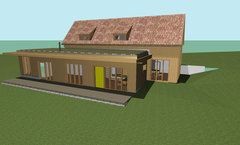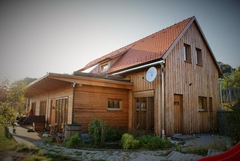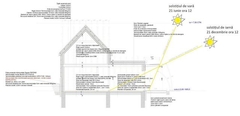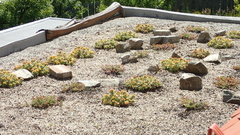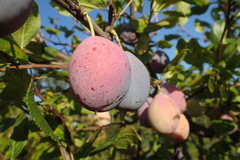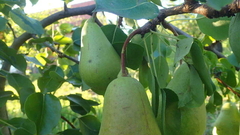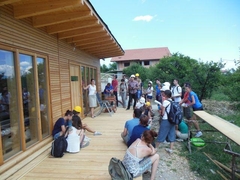Building a low-energy house
I managed the design and construction of a wooden low-energy house. High insulation-value, use of passive and active solar energy, collecting rainwater for domestic use and re-use of grey water are some of the techniques integrated in the design. Close contact with the architect was vital to achieve the desired result. The project run from 2010 till 2013.
Smart features
The wooden structured house has well insulated walls, with an open, wooden cladding so the walls can "breath". The walls and roof are insulated with high quality stone wool.
The house faces south and has a large surface area with windows. There is an overhang that blocks the sun in summer, but allows the sun to warm the rooms in winter. The living room has a dark coloured, natural stone floor which is cool in summer and absorbs heat and therefore warmth in winter. When needed, the house is heated by a gas boiler (via floor heating and radiators) and a separate slow combustion stove.
The 'warm' rooms (living and office) are situated in the south facing part of the house. The 'cool' rooms (kitchen, bed-, bath- and technical space) are situated in the north facing part of the house.
On the north, east and west side the house has a minimum surface area of windows, so the heat loss is kept to a minimum. The north side of the house is built into the ground, which keeps the rooms cooler in summer and warmer in winter.
The building has a green roof that adds to the insulation and helps regulate inside temperatures in summer and winter.
Water supply
The village in which the house is situated does not have a connection to a mains water and sewage system. To be self-sustaining, rain water is collected in a tank, then filtered and pumped into the house.
In dry periods a well delivers ground water to the house. The tap water is used for washing, bathing etc.
Solar panels are used for heating water.
Permaculture
The orchard is mainly filled with plum trees and also some apple, pear, peach, apricot, cherry and quince trees. This way there is fresh fruit to pick throughout the year.
There are several gardens for growing vegetables. Most of them are raised beds, built according to the hugelkultur technique. All materials used are from the orchard, so there is no loss of valuable materials or introduction of foreign dirt and organic matter. The veggies love it!
Model
Since most of the used techniques are still uncommon in Romania, the house can serve as a model for investors, architects and constructors. We already hosted visits from schools.
In 2012 the house has been nominated for the Romanian Architectura 5 event where the best architectural projects of the last two years (of 5 counties) are presented.
Contact me for more details
If you want more information on any of the projects, or would like me to
work on your project, please contact me. I work with governments, project developers, NGOs and private companies.
by mobile at: +40 731 135 952
or by email at:
